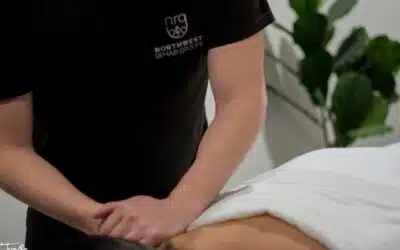Understanding Carpal Tunnel Syndrome
Carpal tunnel syndrome (CTS) is a prevalent condition that can significantly impact daily life, characterized by numbness, tingling, or weakening of the hand. It occurs when the tissues in the wrist compress the median nerve, leading to pain and discomfort. The median nerve, which runs from the forearm into the palm of the hand, controls the movement and feeling of the thumb and all the fingers except for the pinky. The carpal bones play a crucial role in the development of CTS, as proper alignment and movement of these bones are essential to prevent nerve compression. Anatomical differences, particularly the smaller size of the carpal tunnel area in women compared to men, may contribute to the greater prevalence of CTS among females. This condition often results from repetitive movements, such as typing or other work-related repetitive motions, which put strain on the wrist. CTS is not only limited to those who work in repetitive motion industries; it can also affect anyone due to various risk factors and underlying conditions that can lead to carpal tunnel syndrome symptoms.
Causes and Risk Factors of Carpal Tunnel
Several factors can increase the risk of developing carpal tunnel syndrome, making it essential to understand and manage these risks to prevent the onset of this condition:
Anatomic Factors: Structural issues like wrist fractures, dislocations, or deformities can alter the space within the carpal tunnel and increase pressure on the median nerve. These anatomic changes can be due to previous injuries or congenital conditions that predispose individuals to CTS.
Body Fluid Changes: Hormonal changes and fluid retention, especially during pregnancy or menopause, can elevate pressure in the carpal tunnel and irritate the median nerve. Such fluid changes can cause swelling in the wrists, exacerbating the compression on the nerve.
Inflammatory Conditions: Conditions like rheumatoid arthritis can cause inflammation of the tissues around the tendons, putting additional pressure on the median nerve. Inflammatory conditions increase the likelihood of developing CTS due to the swelling and thickening of synovial membranes within the carpal tunnel.
Nerve-Damaging Conditions: Diseases such as diabetes can damage nerves, including the median nerve, heightening the risk of developing CTS. Diabetic neuropathy, a common complication of diabetes, can lead to an increased susceptibility to nerve compression syndromes like CTS.
Repetitive Motion and Ergonomic Factors: Jobs or activities that involve repetitive hand and wrist movements, such as typing, assembly line work, or playing musical instruments, can lead to CTS. Poor ergonomics, such as incorrect keyboard positioning or inadequate wrist support, can also contribute to the development of CTS.
To prevent carpal tunnel syndrome, it is important to minimize stress on the hands and wrists by taking short breaks, maintaining proper posture, and ensuring ergonomic setups.
Symptoms and Diagnosis
Recognizing the symptoms of carpal tunnel syndrome is crucial for early intervention and effective treatment. The symptoms of CTS typically include:
Numbness, Tingling, or Pain: These sensations are usually felt in the thumb, index, middle, and ring fingers. They can be intermittent initially but often become more constant and severe over time.
Weakness: The affected hand may feel weak, leading to difficulty gripping or holding objects. This weakness can interfere with daily activities, making tasks like buttoning clothes or holding a cup challenging.
Physical Examination and Medical History: Doctors often start with a physical exam and review of medical history to identify symptoms and potential risk factors. This examination includes tests like Tinel’s sign and Phalen’s maneuver, which help diagnose CTS.
Imaging Tests: X-rays, ultrasounds, or MRI scans may be used to rule out other conditions and confirm the diagnosis of CTS. Electromyography (EMG) and nerve conduction studies (NCS) can also be conducted to assess the electrical activity of muscles and the function of the median nerve.
Chiropractic Treatment for Carpal Tunnel Relief
Chiropractic care offers a non-surgical, safe, and effective method of carpal tunnel treatment. Chiropractic treatments focus on addressing the underlying issues causing CTS rather than merely alleviating symptoms. The median nerve controls movement and sensation in the hand, and chiropractic adjustments can alleviate pressure on this nerve. Here are the key aspects of chiropractic treatment:
Manual Adjustments: Chiropractors use non-invasive, painless manual adjustments to target the underlying source of pain, directly addressing the cause for effective relief. These adjustments can realign the bones and joints in the wrist, reducing pressure on the median nerve.
Specialized Techniques: Techniques such as wrist adjustments, traction, and ultrasound therapy can relieve pressure and realign the wrist and hand. These treatments improve blood flow and reduce inflammation, promoting healing and reducing pain.
Hands-On Manipulations: These techniques help relieve tension, strain, and compression of the nerves, facilitating improved function and pain reduction. Chiropractors may also use myofascial release techniques to address tightness in the muscles and fascia around the wrist and forearm.
Ergonomic Advice and Exercises: Chiropractors often provide ergonomic advice and prescribe exercises to strengthen the wrist and improve flexibility. These exercises can help prevent the recurrence of CTS by promoting proper wrist mechanics and reducing strain on the median nerve.
Chiropractic care is highly effective to treat carpal tunnel syndrome, emphasizing its non-medicinal approach to pain relief.
Finding a Chiropractor for Long-Term Relief
When seeking chiropractic care for carpal tunnel syndrome, it is crucial to find a chiropractor with experience in treating this condition. Here are steps to ensure effective treatment:
Comprehensive Examination: A qualified chiropractor will perform a thorough examination to determine the cause of symptoms and develop a personalized treatment plan. This examination includes assessing the alignment of the wrist, hand, and spine, as well as evaluating muscle strength and flexibility.
Personalized Treatment Plan: Treatment plans tailored to individual needs can provide long-term relief from symptoms and prevent future episodes. A personalized approach ensures that the specific factors contributing to each patient’s CTS are addressed effectively.
Preventative Care: By addressing the underlying causes of CTS, chiropractic care can help avoid carpal tunnel surgery and promote overall health and wellness. Preventative care may include regular chiropractic adjustments, ergonomic modifications, and exercises to maintain wrist health.
Patient Education: Educating patients about the causes, symptoms, and treatments for CTS is a critical component of chiropractic care. Understanding how to manage and prevent CTS empowers patients to take an active role in their recovery and long-term health.
Integrative Approaches and Benefits for Carpal Tunnel Syndrome
Chiropractic care is often part of a broader integrative approach to treating carpal tunnel syndrome. Chiropractic care can also address neck pain alongside carpal tunnel syndrome. Combining chiropractic treatments with other therapies can enhance the overall effectiveness of the treatment plan. Here are some integrative approaches that can complement chiropractic care:
Physical Therapy: Physical therapists can work alongside chiropractors to provide exercises and stretches that improve wrist strength and flexibility. Physical therapy can also address any compensatory movements or postural issues that may contribute to CTS.
Occupational Therapy: Occupational therapists can offer practical advice on modifying daily activities and work environments to reduce strain on the wrist. They can recommend adaptive tools and techniques to help patients perform tasks more comfortably.
Nutritional Counseling: Nutrition plays a vital role in overall health and healing. Nutritional counseling can help reduce inflammation and promote nerve health by ensuring a diet rich in anti-inflammatory foods and essential nutrients.
Acupuncture: Acupuncture can be used to alleviate pain and improve circulation in the affected area. This ancient practice involves inserting fine needles into specific points on the body to stimulate healing and reduce pain.
Massage Therapy: Massage therapy can help relax tight muscles and improve blood flow to the wrist and hand. Regular massage sessions can reduce muscle tension and support the body’s natural healing processes, ultimately reducing significant pain and improving quality of life.
Conclusion
Chiropractic care offers a non-surgical, effective solution for carpal tunnel syndrome. Through targeted manual adjustments and specialized techniques, chiropractors can provide relief from pain, numbness, and other symptoms while promoting long-term health and preventing future occurrences. Integrating chiropractic care with other therapeutic approaches can further enhance the effectiveness of the treatment plan. If you are experiencing symptoms of CTS, consulting with an experienced chiropractor could be a beneficial step towards recovery and improved quality of life. With a comprehensive and personalized approach, chiropractic care in Vancouver can help you regain function, reduce pain, and prevent the need for invasive surgical procedures.






0 Comments